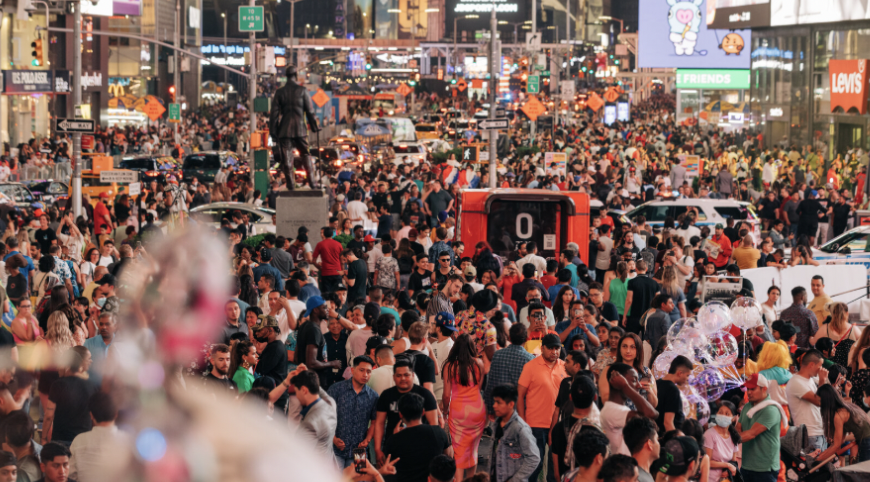The summer heat pressed down on Times Square, thick and unrelenting, as eight-year-old Daniel Mejía shuffled through the rush of strangers. Sunset glowed faintly above the skyscrapers, but neon billboards drowned out the sky, their flashing lights harsh against his eyes. The air smelled of roasted nuts, exhaust, and sweat. Strangers brushed against him, tall and hurried, their faces sharp and unfamiliar. Just minutes earlier, Daniel’s parents had slipped into a gift shop. When he spun around, the spot where they should have been was empty. His chest tightened. His heart pounded. And though no tears fell, fear clenched him like a fist.
Most people see Times Square as dazzling—chaotic but thrilling. For Daniel, that summer evening became something else entirely: the stage of his worst fear. At just eight years old, he found himself lost in one of the busiest places on earth, with no phone, no parents, and no idea who to trust. In that moment, Daniel discovered something he had never known before—that even in fear, he could hold himself steady.
Daniel remembers the moment panic took over. “I realized it when I came back to the gift shop and they weren’t there anymore,” he said. “That’s when I understood I was alone, and I got very afraid.” The crowd moved around him like a current, sweeping him farther from safety. Tourists pressed shoulder to shoulder, laughing, yelling, snapping photos. The heat radiating from the concrete made the air feel heavy, like it was closing in on him.
His first instinct was to grab his phone, but it was useless. “The first thing I did when I realized I was lost was to get out my phone, but I realized I had no charge, so I really got very afraid because I was by myself, which was a really big issue in that moment because I had no communication with my parents” [00:46].
The realization deepened the pit in his stomach. There was no lifeline, no way to call home. His heart pounded harder, but still, he didn’t let tears fall.
Daniel forced himself to think clearly: Who could he trust? “I first thought in was to approach police because they are always there to help you,” he explained. “I thought police was the best option because I did not want to approach a stranger” [01:28].
But before he saw any officers, he spotted something that felt familiar—a Colombian man in the crowd. The idea of someone who spoke his language, who might understand, gave him a flicker of hope. He approached, but the man couldn’t help. His phone had no service. Instead of relief, Daniel felt his fear sharpen into something heavier, like a stone in his chest.
The noise of Times Square grew harsher. Homeless men shouted on a corner. A fight broke out nearby, fists and curses filling the air. He felt smaller and smaller, pressed between strangers who didn’t see him. Yet he refused to cry. “It shaped the way I am right now,” Daniel said. “Because I realized how afraid I am and how I handled the situation” [03:30]. Even lost, even terrified, he found strength in appearing calm.
Daniel’s story is more than a childhood scare. It shows what it feels like to face fear without escape. For an eight-year-old, Times Square wasn’t neon and excitement—it was a maze of strangers, heat, and noise. But in that overwhelming place, Daniel discovered resilience. That day still shapes how he reacts to stress: not with panic, but with steadiness.
Years later, he remembers the heat, the voices, the rushing crowd. But more than fear, he remembers this: “Even though I was scared, I stayed strong,” Daniel said. And in the chaos of Times Square, he found courage that has never left him.



